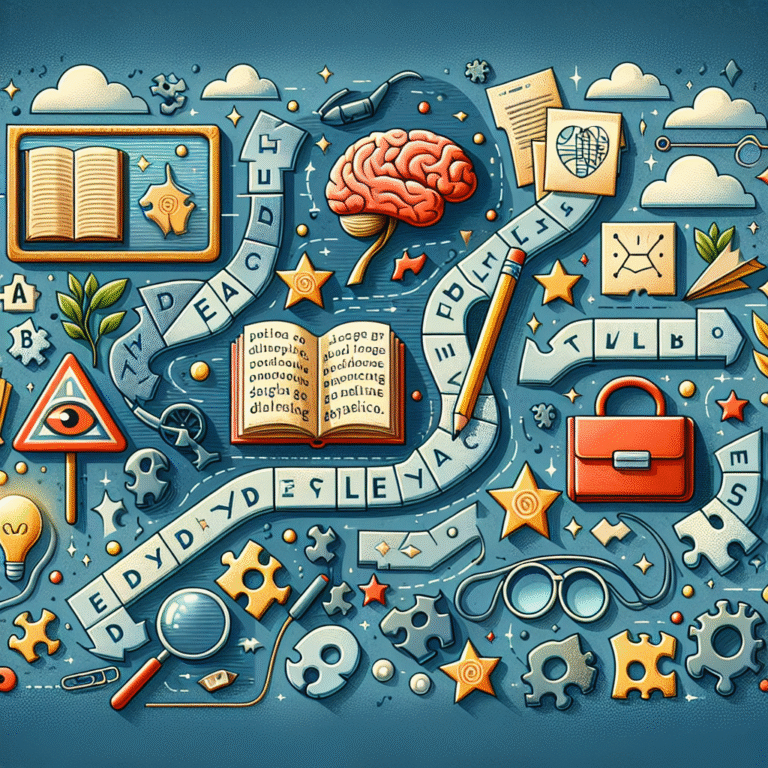
From Chaos to Control: Essential Time Management for Students with Learning Differences
Introduction
In the whirlwind of academic life, students often find themselves juggling multiple responsibilities: homework, class schedules, extracurricular activities, and personal commitments. For those with learning differences, this chaos can multiply, making effective time management crucial. "From Chaos to Control: Time Management for Students with Learning Differences" is not just a catchy phrase; it’s a necessary mantra for fostering success and well-being in the academic world. This article will explore practical strategies, real-world case studies, and actionable insights to help students transition from managing chaos to mastering control over their time.
The Importance of Time Management for Students with Learning Differences
Understanding Learning Differences
Learning differences encompass a broad spectrum of conditions, including ADHD, dyslexia, dyscalculia, and more. Each presents unique challenges in learning, processing information, and staying organized. Effective time management can help mitigate these challenges by providing a structured approach that allows students to focus on their strengths while compensating for challenges.
Why Time Management Matters
- Reduces Anxiety: Having a plan in place helps alleviate the stress that often accompanies disorganization.
- Improves Academic Performance: Students who manage their time effectively can complete assignments on time and prepare adequately for tests.
- Enhances Self-Confidence: Mastering time management can lead to a sense of achievement and control, boosting students’ confidence.
Key Strategies for Effective Time Management
1. Establish Clear Goals
Setting short-term and long-term goals gives students direction. For instance, a student may aim to improve their grades in mathematics over the semester by dedicating specific hours each week to study.
Case Study: John’s Journey
John, a high school student with ADHD, transformed his academic life by setting clear goals. After breaking down his semester into monthly objectives, he noticed an improvement in his performance. For instance, focusing on specific chapters each week made studying less overwhelming. This method exemplifies how establishing clear goals can lead to academic success.
2. Prioritize Tasks
Using tools like the Eisenhower Matrix helps in determining what tasks are urgent versus important. Students can categorize their tasks and focus on high-priority items first.
| Quadrant | Task Type | Action |
|---|---|---|
| I | Urgent & Important | Do it now |
| II | Important, Not Urgent | Schedule it |
| III | Urgent, Not Important | Delegate it |
| IV | Not Urgent, Not Important | Eliminate it |
3. Utilize Calendars and Planners
Visual organization aids comprehension. Digital or paper planners can help students track assignments and deadlines. Color-coding tasks can make this process even more effective.
Case Study: Sarah’s Scheduler
Sarah, a college student with dyslexia, found success using a digital planner. By color-coding her tasks and setting reminders, she improved her organizational skills and met deadlines consistently. This transition from chaos to control highlighted the importance of visual aids in time management.
4. Break Tasks into Smaller Chunks
Large tasks can feel daunting, leading to procrastination. Breaking them down into smaller, actionable steps creates a more manageable pathway to completion.
5. Set Specific Time Limits
Using techniques like the Pomodoro Technique—working for 25 minutes followed by a 5-minute break—enhances focus and productivity.
Tools and Resources
Digital Tools
- Todoist: A powerful task manager that allows students to create tasks, set deadlines, and prioritize effectively.
- Trello: A visual tool that helps students organize tasks using boards and lists.
- Forest: A unique app that encourages focus by growing a virtual tree when users resist the temptation to use their phones.
Physical Tools
- Bullet Journals: A customizable notebook system that allows for creativity while maintaining organization.
- Wall Calendars: A visual reminder of deadlines and important dates helps keep students on track.
Bridging the Gap Between Theory and Practice
Creating a Routine
Establishing a daily routine enhances structure. Students can allocate specific times for studying, leisure, and self-care. Consistency is key in making time management a habit.
Case Study: Mark’s Routine
Mark, a middle school student with dyscalculia, benefited immensely from a structured daily routine. By dedicating evenings to math practice, he gradually saw improvements and reduced anxiety around his weakest subject.
Conclusion
Moving "From Chaos to Control: Time Management for Students with Learning Differences" is a journey worth embarking on. The strategies highlighted—goal-setting, prioritizing tasks, leveraging tools, and creating routines—serve as stepping stones toward improved academic performance and personal well-being. As students learn to manage their time effectively, they unlock the potential to shine in their academic endeavors.
Final Thoughts
Embrace the chaos of student life, but don’t let it control you. Take charge, implement these strategies, and watch as you transition from struggling with disorganization to mastering control over your time and tasks.
FAQs
1. What are some tips for students with ADHD managing their time?
- Use visual tools, set specific alarms, and break tasks into smaller chunks to maintain focus.
2. How can students with dyslexia benefit from time management strategies?
- Structured tasks and using digital planners can help organize thoughts and minimize overwhelm.
3. Are there any apps that assist in time management?
- Yes! Apps like Todoist, Trello, and Forest are great for task management and boosting concentration.
4. How can parents support their children with time management?
- Encourage regular check-ins, assist in creating a schedule, and model effective time management behaviors.
5. Is it possible to improve time management skills over time?
- Absolutely! With practice and consistency, students can develop and refine their time management skills significantly.
By integrating these insights and tools into daily life, students with learning differences can navigate their academic responsibilities more effectively, turning chaos into smooth sailing.






